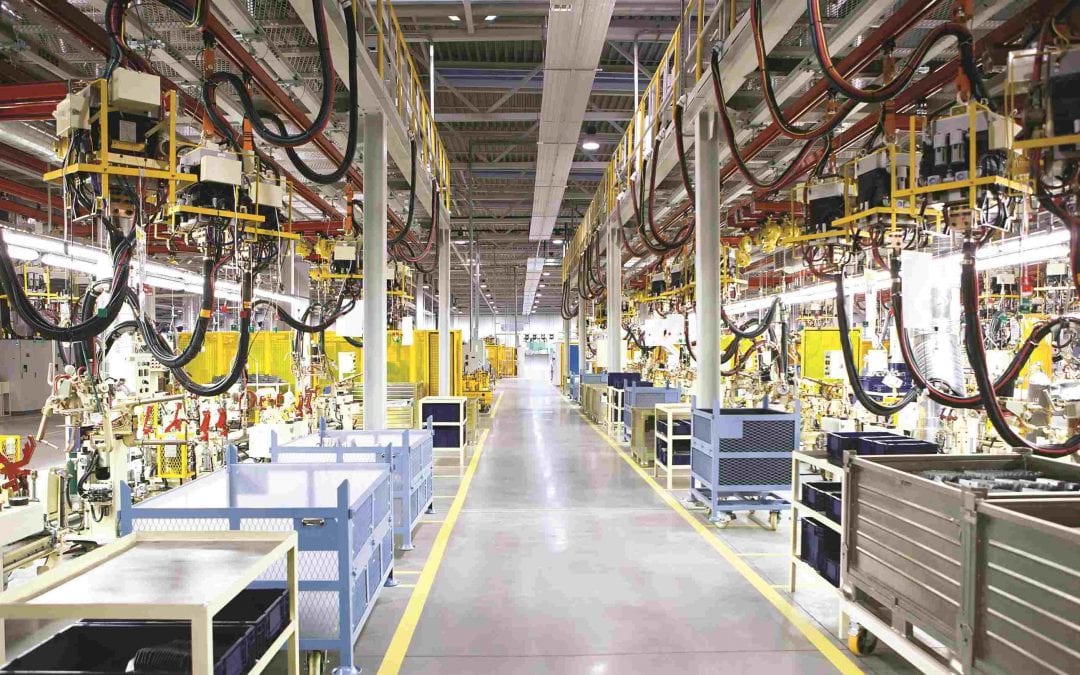The world’s largest movers and makers have never gone it alone. Every plant is full of a variety of hardware and software that manages to work together. Every supply chain requires a multitude of expertise and seamless hand offs. It truly takes an ecosystem of support to get any one ingredient, part or product from development to successful use by the customer.
But, the flawless end-to-end supply chain organization and execution industrial companies rely on today – to feed custom production, product/batch genealogy, just-in-time inventory, smart cities, two-day delivery with full visibility throughout, etc. – is a new beast. The shift to Industry 4.0 has turned these vendor relationships and partnerships into something akin to a global industrial supply chain tech stack, where excellence or ineptitude from one participant can have an impact up or down the supply chain in a matter of moments.
The “ineptitudes” get expensive, quickly. It’s not just downtime in production – though research shows that unplanned downtime costs manufacturers an estimated $50 billion annually, and that asset failure is the cause of 42% of this unplanned downtime. Today, companies need to worry about everything from cyber breaches to the employment practices of their suppliers’ suppliers and the potential damage isn’t just to the bottom line. Your brand is at stake.
In a study Hotwire ran last year, we found that 82% of consumers would consider dropping a brand if it were associated with a partner or supplier that mishandled a high-stakes issue. What’s more, 80% of business decision makers would terminate a suppler relationship if they failed to address a high-stakes communications issues adequately. Your ecosystem matters. Even in B2B, both because you are part of the larger B2B2C model, and because businesses that buy do so through humans and increasingly those humans care about values. Our study also showed that 93% of US business decision makers take into account values when making a B2B purchasing decision.
So what do you do when an error from just one vendor can cause a ripple effect that results in loss of revenue and damaged reputations globally?
The price tag alone is reason enough for companies, especially those in the industrial sector where downtime costs are astronomical, to better understand how they fit into processes and industrial supply chain tech stacks. Just “working together” won’t cut it anymore – ongoing success requires seamless integration.
Rightsizing Collaboration
It’s time for industrial companies and the software and service providers who support them to start working together more deeply and widely to get ahead of the curve.
What do we mean by that? Here are a couple of examples that skim the surface of the different ways the industrial sector should be rethinking their approach to multi-party ecosystems:
- Product and process optimization: From planning and development to integration and execution, industrial companies need to drill down into every step of their process to understand where external partnerships are needed and how third-party applications, services and solutions can seamlessly integrate into their operations. Are there areas of overlap or hidden synergies? Any opportunities to collaborate to make the product better or the process faster or more cost-effective? Has a joint risk assessment been done? Is there a preventative maintenance strategy in place to avoid disruptions? These are the questions that companies and their vendors should be discussing together now.
- Improved experience and increased success: Improved customer experience is a major focus area for companies going through digital evolution; it’s all about delivering the right message to the right people at the right time, and choosing the right marketing technology is an important step in making it possible (and there’s a lot to choose from). If a company’s marketing tech stack is integrated properly, it can help accelerate and scale operations while improving the customer – and the consumer – experience. This, in turn, leads to celebrating more wins and strengthening relationships with both partners and customers.
Industry 4.0 is reshaping the industrial sector – and with this comes new opportunities. If these companies revisit and revamp their approach to optimize collaboration in the right areas and then more widely and frequently talk about what their partnerships are, what they mean to customers and how those tie into their company mission, the industrial tech stack becomes a true asset to leverage.
